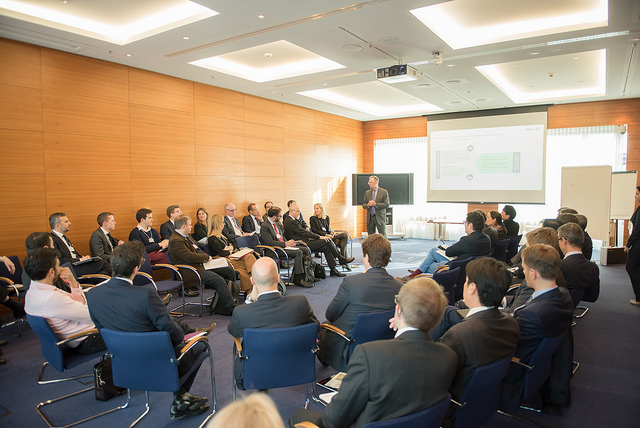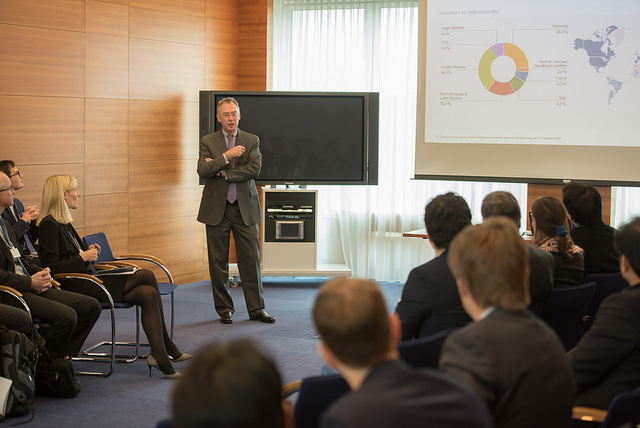Oliver Wyman and the World Economic Forum's (WEF) New Initiative
The world stands on the brink of a Fourth Industrial Revolution, a revolution that is characterized by the advent of technological breakthroughs, such as the Internet of Things and self-driving vehicles, is driving a radical shift in the nature of risks faced by individuals, businesses and society.
In an effort to better understand how this Fourth Industrial Revolution is impacting the world we live in, Oliver Wyman in partnership with the WEF is conducting a new initiative “Mitigating Risks in the Innovative Economy”.
This initiative aims to bring together global insurance and technology executives, technology pioneers, policymakers, government representatives and academics to develop key recommendations on how to re-distribute risks and the potential losses associated with emerging technology innovations. The recommendations are intended to encourage international collaboration to create market-based solutions to build resilience, mitigate economic and social impact of global risks, and enable these technologies to serve their intended purpose with limited trade-offs.
Workshops and debates
As part of this new initiative, workshops were held with senior leaders from leading insurers, policymakers and technology innovators.
50 stakeholders came together to discuss three key areas of technology innovation:
- Self-Driving Vehicles
- Robotics
- The Sharing Economy
The workshop structured a series of dialogues on each of these topics to provide opportunities to think collectively, build common ground, and test concrete ideas and solutions on the chosen topic.
Self-driving vehicles
Most estimates have self-driving vehicles entering the market within the next decade. With a large scale adoption, self-driving vehicles offer significant benefits to society. The technology is predicted to decrease crashes, increase mobility for the elderly and the disabled, and decrease congestion on roads.
How can the insurance industry support and enable the advancement of self-driving vehicles in the future and what are the challenges?
This involved the discussion on “attribution of responsibility”, who pays for the compensation of losses in the event of an accident and who is responsible to define a product is safe.
A number of key recommendations were identified on how the insurance industry can promote and enable the adoption of self-driving vehicles:
- Insurers should propose and encourage approaches for handling liability in practice (align across industries on a principle-based framework for evaluating liability)
- Insurers should collectively identify a single forum for each of a) standards development, b) legislative initiatives, and c) neutral discussions
- Insurers should collectively clarify data needs, opportunities, and access frameworks
- Insurers should engage with other industries (e.g., aviation, electronic trading) for lessons learned
- Finally, insurers should (continue to) support a concrete and narrow test case, pilot program, demonstration project, etc.
The Sharing Economy
The Sharing Economy - otherwise referred to as the gig economy, the on-demand economy, etc. is a form of collaborative consumption built on a foundation of technology, built on recognizing and minimizing economic inefficiencies.
There is a significant role for the insurance industry in this space. However, there are some challenges to overcome. The largest challenge for incumbents is the absence of credible loss data due to rapid growth. You could argue, however, that larger sharing economy companies have more actuarially credible data than many other mature businesses.
"When we originally went into the insurance marketplace, we were asked for 10 years or loss data, characteristics of all our properties, etc. Sharing economies don't know if there is a swimming pool on site, they don't know their proximity to fire stations"
At the moment, there are options to insure the personal layer of risk and the commercial layer of risk, but not both together. We need to define what protection layer is required to ensure workers and contractors in this industry are adequately covered.
Robotics
The term robotics (derived from science fiction) is a generic term that covers a wide range of devices that can have little in common. It is almost impossible to consider that there would be a one-size fits all solutions.
One of the key challenges discussed in the workshop was how to proportion liability (across users, manufacturers, software developers, etc.). As these technologies become more and more complex, it will be difficult to assess “what went wrong” and thus, difficult for users to prove a product defect. If that is the case, is it reasonable to hold the user responsible for paying damages in lieu of the producer or manufacturer?
"We are in legal limbo."
Further complicating the issue is the wide range of consequences that can occur from a product error. Consider a robotic implant – in the not so distant future, a robotic hand will be controlled by the nervous system. This will have tremendous impact on the quality of life for people with disabilities. However, consider the wide range of consequences in the case of a product error (on one extreme the error could occur as a user is reading a book, however, on the other end, this error could occur as the user is driving a car). Are insurers ready to cover this type of risk?
There is the need for an alternative liability system, one that enforced strict or even “absolute” liability. Some say that the system should place less stress on “who is to be blamed” and instead on “who is best positioned to manage the cost.”





